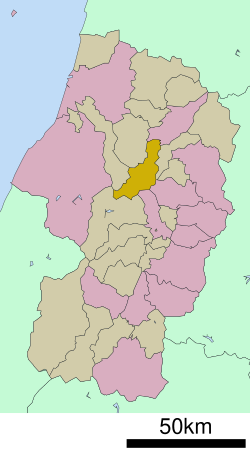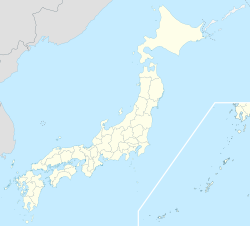
Yuzawa is a city located in Akita Prefecture, Japan. As of 31 January 2023, the city had an estimated population of 41,404 in 17551 households and a population density of 52 persons per km2. The total area of the city is 790.91 km2 (305.37 sq mi). Yuzawa claims to be the birthplace of the famous Heian period poet Ono no Komachi.

Kazuno is a city located in Akita Prefecture, Japan. As of 28 March 2023, the city had an estimated population of 28,329 in 12,570 households, and a population density of 40 persons per km2. The total area of the city is 707.52 square kilometres.

Yonezawa is a city in Yamagata Prefecture, Japan. As of 1 February 2020, the city had an estimated population of 81,707 in 33,278 households, and a population density of 150 persons per km2. The total area of the city is 548.51 square kilometres (212 sq mi). Yonezawa is most famous for its local delicacies and for being a castle town that was once home to the Uesugi clan, including the daimyō Uesugi Yozan.

Tsuruoka is a city in Yamagata Prefecture, Japan. As of 31 January 2020, the city had an estimated population of 125,389 in 49,024 households, and a population density of 95.74 persons per km². The total area of the city is 1,311.53 square kilometres. Tsuruoka is the biggest city in Tōhoku region in terms of land area.

Shinjō is a city in Yamagata Prefecture, Japan. As of 1 January 2020, the city had an estimated population of 34,937, and a population density of 160 persons per km2. The total area of the city is 223.08 km2.

Murayama is a city located in Yamagata Prefecture, Japan. As of 1 February 2020, the city had an estimated population of 23,643 in 8133 households, and a population density of 120 persons per km². The total area of the city is 196.98 square kilometres (76 sq mi).

Nagai is a city located in Yamagata Prefecture, Japan. As of 1 February 2020, the city had an estimated population of 26,466 in 9940 households, and a population density of 120 people per km². The total area of the city is 214.67 square kilometres (83 sq mi).

Higashine is a city located in Yamagata Prefecture, Japan. As of 1 February 2020, the city had an estimated population of 47,910 in 17868 households, and a population density of 230 persons per km². The total area of the city is 207.17 square kilometres (80 sq mi).

Obanazawa is a city located in Yamagata Prefecture, Japan. As of 1 February 2020, the city had an estimated population of 15,237, and a population density of 40.9 persons per km2. The total area of the city is 372.32 square kilometres (144 sq mi).

Nishikawa is a town located in Yamagata Prefecture, Japan. As of 1 February 2020, the town had an estimated population of 5,225 in 1851 households, and a population density of 145.1 persons per km². The total area of the town is 393.19 square kilometres (152 sq mi).

Ōe is a town located in Yamagata Prefecture, Japan. As of 1 February 2020, the town had an estimated population of 7,894 in 2828 households, and a population density of 51 persons per km2. The total area of the town is 153.92 square kilometres (59 sq mi).
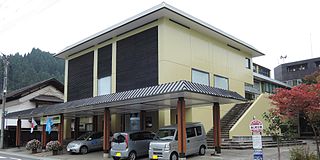
Kaneyama is a town located in Yamagata Prefecture, Japan. As of 1 January 2020, the town has an estimated population of 5,205, and a population density of 35 persons per km². The total area of the town is 161.79 square kilometres (62 sq mi).

Mogami is a town in Yamagata Prefecture, Japan. As of 29 February 2020, the town has an estimated population of 8,441 in 2,848 households, and a population density of 26 persons per km2. The total area of the town is 330.27 square kilometres (128 sq mi).

Mamurogawa is a town located in Yamagata Prefecture, Japan. As of 31 March 2023, the town has an estimated population of 6,792 in 2560 households, and a population density of 18 persons per km². The total area of the town is 374.22 square kilometres (144 sq mi).
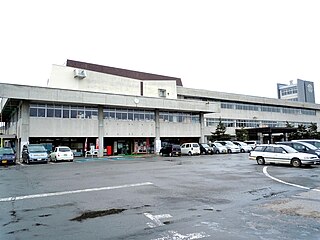
Takahata is a town located in Yamagata Prefecture, Japan. As of 1 April 2019, the town had an estimated population of 23,367, in 7629 households, and a population density of 130 persons per km2. The total area of the town is 180.26 square kilometres (70 sq mi).

Iide is a town located in Yamagata Prefecture, Japan. As of 29 February 2020, the town had an estimated population of 6,970 in 2354 households, and a population density of 21 persons per km². The total area of the town is 329.60 square kilometres (127 sq mi). In 2008, Iide was selected as one of The Most Beautiful Villages in Japan.

Mikawa is a town located in Yamagata Prefecture, Japan. As of 31 March 2023, the town had an estimated population of 7,282 in 2478 households, and a population density of 220 persons per km². The total area of the town is 33.22 square kilometres (13 sq mi). Mikawa is the seat of the Yamagata Prefectural Government's |"general branch office" responsible for the unofficial "Shōnai Region", corresponding to northwestern Yamagata. It is also the seat of the central government's MLIT transportation branch office that licenses the Shōnai vehicle registration plate for the same region.
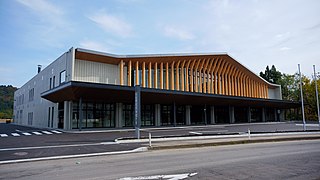
Semboku is a city located in Akita Prefecture, Japan. As of 31 January 2023, the city had an estimated population of 24,045 in 10,398 households, and a population density of 22 persons per km2. The total area of the city is 1,093.56 square kilometers (422 sq mi).

Shōnai is a town located in Yamagata Prefecture, Japan. As of 29 February 2020, the town has an estimated population of 20,940 in 7108 households, and a population density of 87.5 per km². The total area of the town is 249.17 square kilometres (96 sq mi).

Yurihonjō is a city located in Akita Prefecture, Japan. As of 28 February 2023, the city has an estimated population of 72,550 in 30,750 households, and a population density of 60 inhabitants per square kilometre (160/sq mi). The total area of the city is 1,209.59 square kilometres (467.03 sq mi).

